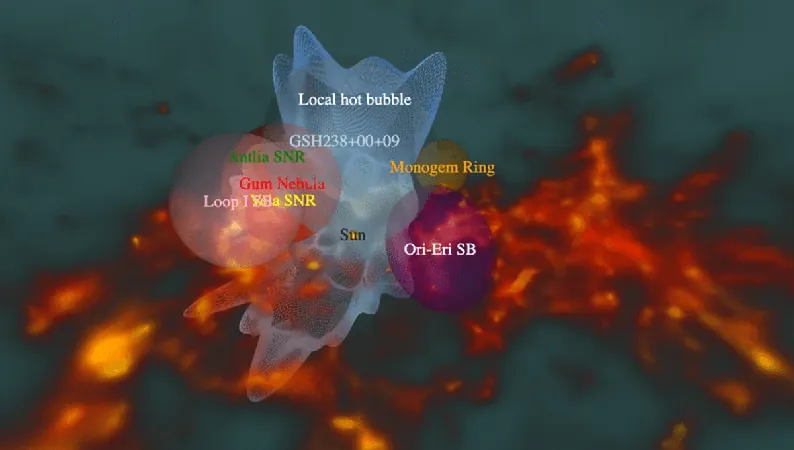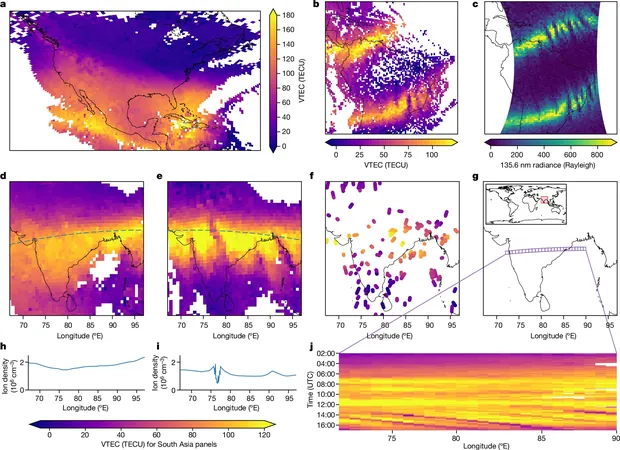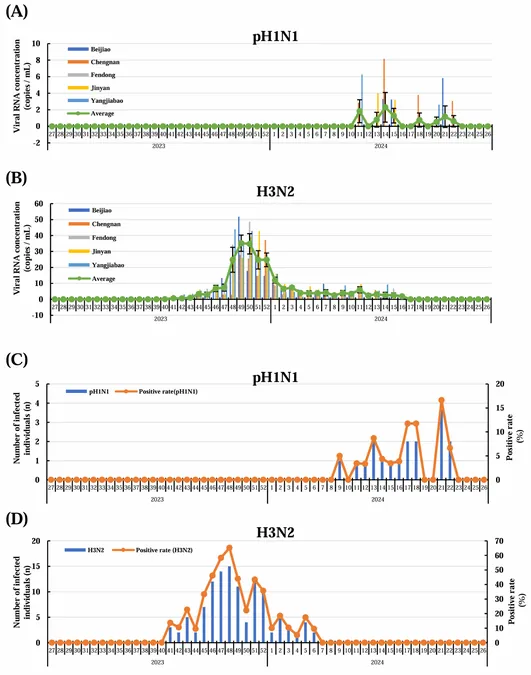
Astronomers Discover Mysterious 'Interstellar Tunnel' Leading to Centaurus Constellation
2024-11-11
Author: John Tan
A groundbreaking discovery by a team of astronomers utilizing the eROSITA All-Sky Survey has unveiled a peculiar 'interstellar tunnel' that directs towards the constellation of Centaurus. This tunnel potentially forms a bridge between our Solar System's local bubble and a neighboring superbubble, setting the stage for a deeper understanding of our cosmic environment.
Our Solar System is nestled within a vast structure known as the 'Local Bubble,' a 1,000-light-year-wide region characterized by a significantly low density, containing only 0.001 particles per cubic centimeter—a stark contrast to the typical interstellar space density of 0.1 particles per cubic centimeter. This phenomenon, known as the 'Local Hot Bubble' (LHB), has intrigued astronomers since its concept emerged nearly fifty years ago.
Historically, our Solar System has not always existed within this low-density bubble, raising questions about the effects of various stellar environments on our climate through astronomical history. As we continue to inhabit this region for the next estimated 10 to 20 million years, understanding our local cosmic neighborhood becomes increasingly crucial.
Recent studies hint at a possible formation process for the LHB, suggesting that a series of supernova explosions could have played a key role in creating and maintaining this bubble. Researchers have employed a blend of numerical simulations and the study of supernova-produced radioisotopes found in the Earth's crust to support this hypothesis.
Led by scientists from the Max Planck Institute for Extraterrestrial Physics, the team leveraged data from the eROSITA space telescope, a collaborative endeavor between Russia and Germany aimed at mapping the universe in X-rays. They discovered that the spatial extent of hot gas is more pronounced towards the galactic poles as it evades the denser galactic disc—an observation in line with prior findings from the ROSAT survey.
Co-author Michael Freyberg expressed astonishment at the existence of the 'interstellar tunnel' toward Centaurus, which distinctly separates itself from the cooler interstellar medium. The enhanced sensitivity of the eROSITA telescope allowed this tunnel to stand out, revealing intriguing features not seen before.
The researchers propose that this tunnel may be populated with hot plasma, linking our Local Bubble to the Loop I superbubble. However, details surrounding this tunnel remain elusive, with views complicated by the presence of another massive structure situated above the galactic center.
Further spectroscopic studies are required to clarify these complexities. The team's paper indicates a need for careful spectral analysis to disentangle the emissions from the Loop I superbubble and the eROSITA bubbles to ascertain their properties and distances more accurately.
This thrilling discovery opens the door to a plethora of questions about our neighborhood in the cosmos, promising future research will yield further revelations about the intricate web of structures that make up our universe.





 Brasil (PT)
Brasil (PT)
 Canada (EN)
Canada (EN)
 Chile (ES)
Chile (ES)
 España (ES)
España (ES)
 France (FR)
France (FR)
 Hong Kong (EN)
Hong Kong (EN)
 Italia (IT)
Italia (IT)
 日本 (JA)
日本 (JA)
 Magyarország (HU)
Magyarország (HU)
 Norge (NO)
Norge (NO)
 Polska (PL)
Polska (PL)
 Schweiz (DE)
Schweiz (DE)
 Singapore (EN)
Singapore (EN)
 Sverige (SV)
Sverige (SV)
 Suomi (FI)
Suomi (FI)
 Türkiye (TR)
Türkiye (TR)